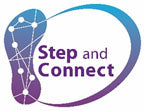Perspectives in Providing Exercises:
Can Name, Image and Instructions Make a Stronger Impact?
During the last few years, I have been paying extra attention to the instructions, cues and feedback we provide in order to teach / learn new movements. Watching my children learn new movements has brought it all to an even deeper understanding for me.
As a therapist, I think of movements anatomically and kinematically.
If you aren’t a therapist, did I lose you already? Well, that’s exactly what I am realizing – there’s room for improvement in the way that I describe motion and instruct. I think in planes of motion (frontal, sagittal and transverse), but I am learning that my clients think more in “landscape and portrait mode” to understand the perspective of moving in different directions.
 Vs.
Vs.
I developed a product that incorporates feedback, and as the word about Balance Matters® is spreading, I’ve noticed that more and more therapists and patients are requesting additional instructions on exercises. I have written up exercise instructions, provided pictures and videos, but I’ve continued to think long and hard about how can I improve it even more.
It’s All in the Name
One of the things I love about yoga and Tai Chi is the creative name/image that goes with each exercise. When practicing, people remember the names and I think this helps embody the movement better. Think of “downward dog pose” vs “quadruped with hips up” or “mountain pose” vs “stand on one foot” – which is more appealing to you? Maybe that’s why everyone remembers “bridging exercise” rather than “lie on back, feet flat and lift hips 10x.”
Five Basic Balance Matters® Movements that Matter!
So I am now ready to introduce my 5 Basic Balance Matters® Exercises.
Please visit our YouTube Channel to view the exercise videos.
It’s important to note that the images I provide may not connect with every individual; it’s a starting point. These are the basic exercises, but the name can be changed based on what resonates with each individual. For instance, one client of mine loves the sidestep image of a pendulum, adding his arms as he steps and listening to the rhythm. Another steps sideways, preferring to picture a game of tennis while hitting the ball high, low, mid. Whatever they’re imagining, the important thing is that they are both sidestepping, which is beneficial for balance. I would love input from others for additional names as we all may have a different image that resonates. We can then share as a community different images to help optimize movement patterns and balance.
The Balance Matters® exercise movements are:
Sunrise-Sunset
Rock On
Let’s Dance: Step Up/Step Back
Ride the Tide Stride
Tick-Tock
Each exercise incorporates feedback, cues and mental imagery to help improve movements and balance.





References:
Sunrise-Sunset1. André HI, Carnide F, Borja E, Ramalho F, Santos-Rocha R, Veloso AP. Calf-raise senior: a new test for assessment of plantar flexor muscle strength in older adults: protocol, validity, and reliability. Clin Interv Aging. 2016;11:1661–1674. Published 2016 Nov 15. doi:10.2147/CIA.S115304
2. André HI1, Carnide F2, Moço A3, Valamatos MJ4, Ramalho F5, Santos-Rocha R6, Veloso A7. Can the calf-raise senior test predict functional fitness in elderly people? A validation study using electromyography, kinematics and strength tests. Phys Ther Sport. 2018 Jul;32:252-259. doi: 10.1016/j.ptsp.2018.05.012. Epub 2018 Jun
3. Dakin CJ, Bolton DAE. Forecast or Fall: Prediction's Importance to Postural Control. Front Neurol. 2018;9:924. Published 2018 Oct 30. doi:10.3389/fneur.2018.00924
4. Baldissera FG, Tesio L. APAs Constraints to Voluntary Movements: The Case for Limb Movements Coupling. Front Hum Neurosci. 2017;11:152. Published 2017 Mar 31. doi:10.3389/fnhum.2017.00152
Rock On
1. Melzer I, Benjuya N, Kaplanski J, Alexander N. Association between ankle muscle strength and limit of stability in older adults. Age Ageing. 2009;38(1):119–123. doi:10.1093/ageing/afn249
Let’s Dance: Step Up/Step Back and Ride The Tide Stride
2. Okubo Y, Schoene D, Lord SR Step training improves reaction time, gait and balance and reduces falls in older people: a systematic review and meta-analysis. British Journal of Sports Medicine 2017;51:586-593.
3. Espy DD, Yang F, Bhatt T, Pai YC. Independent influence of gait speed and step length on stability and fall risk. Gait Posture. 2010;32(3):378–382. doi:10.1016/j.gaitpost.2010.06.013
Tick-Tock
4. Mille, M. L., Johnson-Hilliard, M., Martinez, K. M., Zhang, Y., Edwards, B. J., & Rogers, M. W. (2013). One step, two steps, three steps more... directional vulnerability to falls in community-dwelling older people. Journals of Gerontology - Series A Biological Sciences and Medical Sciences, 68(12 A), 1540-1548. https://doi.org/10.1093/gerona/glt062
5. Laurie A. King, PhD, PT and Fay B. Horak, PhD, PT. Lateral Stepping for Postural Correction in Parkinson’s Disease. Arch Phys Med Rehabil. 2008 March ; 89(3): 492–499. doi:10.1016/j.apmr.2007.11.017.

Be the first to comment